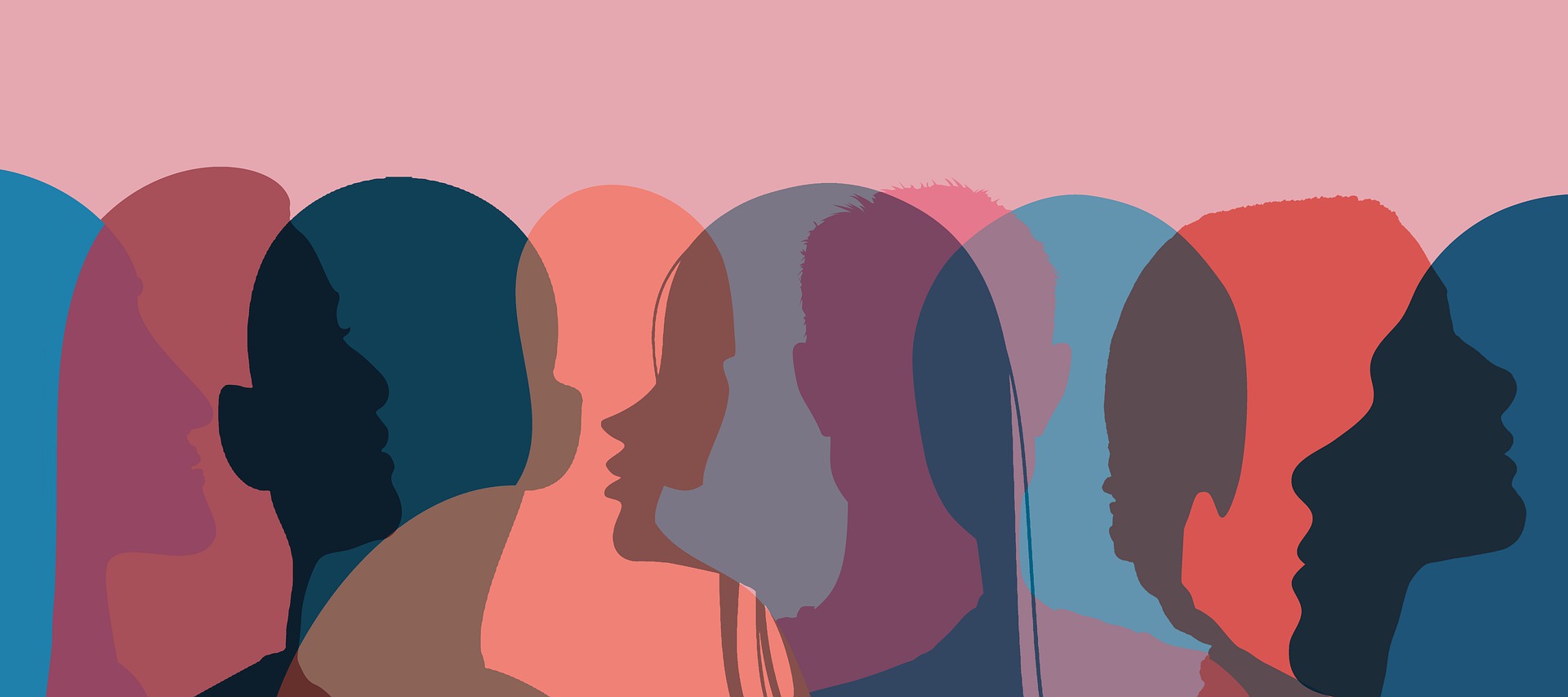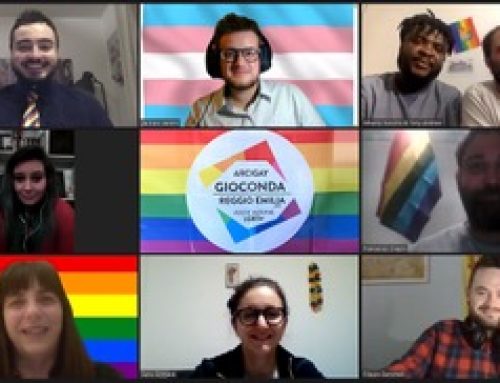Written by Salvatore Terralavoro
“In a world accustomed to reasoning in opposites, it is difficult to accept that a body can present both male and female characteristics”
In the Samoa Islands there are females, males and fa’afafine: the third gender which, while representing neither of the two, is recognized by society and respected (1). In Italy, “fa’afafine” is the title of a play for children. A show that won several awards for children, which enjoys the patronage of Amnesty international; despite this it has been defined as a “spectacle of horrors” .
Most Western countries are still terribly behind in terms of the inclusion of intersex people and specifically still commit what is in effect an atrocity; mutilation at birth of the sexual organs of intersex people in order to “normalize” them towards one of the two sexes. Some babies born with intersex characteristics are directly murdered. Intersex infanticide remains a major problem in southern and eastern Africa, South Asia, Brazil, and China
But first of all, who are intersex?
Intersex is a general term used for a variety of conditions in which a person is born with biological attributes that do not fit the specific definitions of female or male.
Some intersex people experience gender dysphoria and identify as transgender as well, for instance when they have been socialized as one sex and gender and find during puberty (or earlier) that they exhibit attributes of “the other” gender in addition to or instead of those of their assumed sex and socialized gender
Some examples of intersex person are; person who appears to be female on the outside may have mostly male-typical anatomy on the inside; a girl has a large clitoris, or no vaginal opening, or a boy is born with a small penis, or with a divided scrotum so that it looks like labia.
In some cases, intersex traits are visible at birth while in others, they are not apparent until puberty. Some chromosomal intersex variations may not be physically apparent at all (4).
Up to 1.7 % of human births (1 in 60) may be intersex, including variations that may not be apparent at first. Babies with genitals that cannot easily be classified as male or female may number approximately 1 in every 1,500 (Fausto-Sterling, 2000). Approximately the same people are born intersex about as often as they’re born with red hair or as twins (2).
According to a recent study by the Netherlands Institute for Social Research, cited by OII Italia founder Alessandro Comeni, the percentage of intersex people in Europe exceeds 0.5 percent (5).
“It means that one in 200 people has a variation of sex characteristics.” In any case, this is an underestimate: the study collects data relating to the 15 main intersex types. “But those described in the medical field are much more numerous”, Comeni confirms. It is a population united by the same destiny. In many countries, intersex people do not even exist legally. Often, the awareness campaign denounces, “they are labeled as sick and therefore” cured “and” normalized “with surgical, hormonal and psychological treatments”. The transition is automatic and painful.
The history of “torture”.
Since the 1920s, surgeons have attempted to “remedy” an increasing array of conditions. In the 1950s, a team of medical specialists at Johns Hopkins University (USA) developed what has come to be called the “optimum gender of rearing” system for treating children with intersex variations. The Hopkins team believed that any child could be made into a “real” girl or boy with early gender assignment, altering their bodies and convincing them and their parents to believe and act in accordance with the gender assignment. As the Hopkins model spread throughout the developed world, surgeons performed cosmetic genital surgeries on intersex children without their consent, believing this was necessary and efficacious.
Unfortunately, in many countries, babies with ambiguous genitals are still forced to undergo surgery in order to be legally recognized as either female or male, even though for most, the condition is not lifethreatening.
It is said that for surgeons, it is easier to “dig a hole” than “build a pole,” so the majority of intersex babies are assigned female at birth. Only few countries have yet provided for the legal recognition of intersex people (Germany, Austria, NZ, Australia, Malta, India and Canada)(5).
Many intersex people, including children too young to understand or consent to unnecessary medical interventions, have been traumatized by their experiences in medical settings. These experiences may include surgical removal of reproductive organs, alteration of external and internal genitalia, and subjection to pre-pubescent hormonal therapy to force their bodies to develop in certain, expected ways. Some people have had their intersex status deliberately withheld from them by doctors and parents. As a result of these practices, intersex people are often reluctant to seek care at.
Parents of intersex children can experience pressure by doctors or other authority figures such as therapists, registry officers, and other members of their family, to have their children undergo these invasive—and in most cases—irreversible surgeries for nonmedical reasons. Because most of these surgeries happen when they are children, they don’t have the capacity or understanding to give consent. Intersex genital mutilation is one specific type of “normalizing” surgery carried out on the genitals of intersex infants and children for social, cultural or religious reasons—such as the belief that bodies should conform to binary notions of male or female (3).
Medically unnecessary surgeries can cause physical and psychological suffering. Children too young to express their gender identity may be surgically assigned the wrong sex. Surgery to alter the size or appearance of genitals can cause scarring, incontinence, loss of sexual feeling, and emotional distress.
Removing testes and ovaries results in involuntary sterilization and may require lifelong hormonal replacement therapy.
Intersex rights advocates want surgeries delayed until children are old enough to make their own decisions about what, if any, interventions they want. Many health care providers have spoken out in favor of ending this practice, and international bodies, including the United Nations, the World Health Organization and the Council on Europe have called for an end to nonconsensual and medically unnecessary surgeries on infants and children, stating that they violate human rights and can be a form of torture. In 2015, Malta became the first country to ban these surgeries until children are old enough to consent.
Italian Law pay no attention to Intersex people. Similar to the rest of the world and most of European country unecessary surgeon intervention are made and this is terrible.
In 2018, the United Nations Committee on the rights of people with disabilities intervened. Denouncing the practices of genital mutilation related to intersex individuals, even in our country. Nothing has changed since then, we will have to wait for the moment when the Maltese and Portuguese legislations, pioneers in the protection of the rights of intersex children, will be taken as a model. We need new guidelines on neonatal genital interventions and a national monitoring of intersex births, for the creation of a case literature that helps the knowledge and improvement of the living conditions of intersex people in Italy and in Europe.
References
- Barrett, Jonathan, Samoa’s ‘third gender’ delicately balances sex and religion, in Reuters, 31 luglio 2019.
- Fausto-Sterling, Anne (2000). Sexing the Body: Gender Politics and the Construction of Sexuality. Basic Books. ISBN 978-0-465-07714-4.
- Humans Right Watch, 2017. “I Want to Be Like Nature Made Me”, Medically Unnecessary Surgeries on Intersex Children in the US, Printed in the United States of America, ISBN: 978-1-6231-35027.
- United Nations Office of the High Commissioner for Human Rights, 2015. “Free & Equal Campaign Fact Sheet: Intersex”.
- Van Lisdonk, J. (2014). Living with intersex/DSD: an exploratory study of the social situation of persons with intersex/DSD. Netherlands Institute for Social Research.




Scrivi un commento